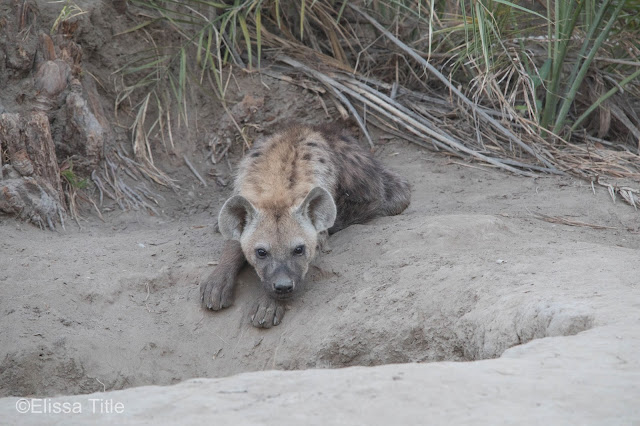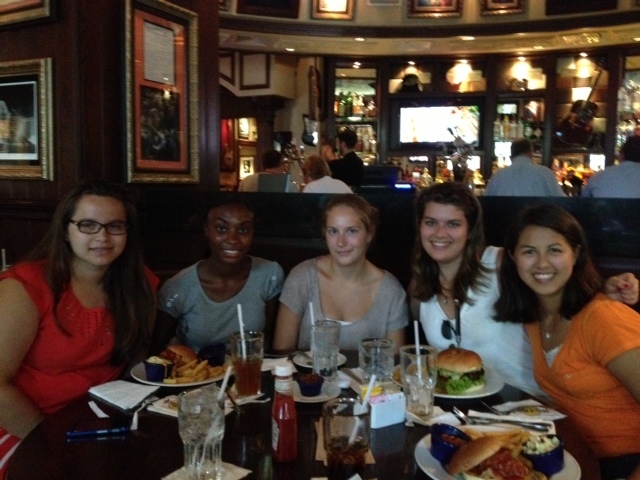After a very long 24+ hours of flying, I landed in Entebbe (Uganda) just past 10pm on March 15. Uganda is home to the tallest mountain range in Africa, the world’s longest river, and the continent’s largest freshwater lake (in addition to the world’s second largest inland freshwater lake by size after Lake Superior in North America, though Lake Baikal in Siberia is larger by volume and depth). The “pearl of Africa”, as Winston Churchill called Uganda, is bordered by South Sudan to the north, Kenya to the east, Tanzania and Rwanda to the south, and the Democratic Republic of the Congo to the west. Uganda is a small country by African standards—it’s similar in area to Great Britain—but it hosts 500 plus species of mammal and over 1,000 species of birds. There are at least 32 languages spoken here, but English, Swahili, and Ganda are the most used. Uganda’s religious heritage is tripartite: indigenous religions, Islam, and Christianity. Around four-fifths of the population is Christian, primarily divided between Roman Catholics and Protestants. Around one-eight of the population is Muslim. The remainder practice traditional religions and, as in other parts of Africa, Islam and Christianity have been combined with indigenous religions to form various syncretic religious trends.
I always hate arriving to destinations I haven’t yet visited at night as it’s hard to get a sense of place but unfortunately most flights arrive late at night. One minute during descent it was pitch black and the next, lights were passing by, and we had touched down in Entebbe. Entebbe is a town on a peninsula in Lake Victoria. It was founded as a garrison post in 1893 and served as the British administrative center of Uganda until 1958. Now, it’s essentially a residential center for government employees (I sat next to a UN worker on the plane!) but it’s also a transportation crossroads for eastern Africa with an international airport and steamship connections via Lake Victoria to Kenya, Tanzania, and other parts of Uganda. After presenting our documents at the health check (yellow fever card, negative PCR test, and passport), we went through immigration where we handed over our visa pre-approval forms and received a physical East Africa visa in our passport instead. Even with expedited service (an airport worker met our group at the gate, and we went to the front of all the lines), our checked baggage had already been waiting for us on the carousel. A short walk to the car and a 10-minute drive later, we were at our first hotel: Karibu Entebbe. By the time we got to the hotel, it was near 11pm but with the jet lag and excitement of what’s to come, I didn’t go to sleep until past 12:30am.
 |
| View from the balcony at Karibu Entebbe. |
The following morning, we had a leisurely breakfast. It sounds silly because I can get this at home, but whenever I come to Africa, I have a craving for baked beans in the morning. There’s something about being here that just makes them taste way better. I might have been overly ambitious with my breakfast order, but I killed almost all of it—baked beans, a Spanish omelet, grilled tomatoes and mushrooms, juice, and a fabulous African tea with spices and lots of ginger.
 |
| My first breakfast in Africa since 2019. |
My initial plan for the day was to visit a craft center to get a head start on my shopping spree and possibly go to the Entebbe botanical garden but with the jet lag kicking in, I decided to have a relaxing day at the lodge. I spent a good while photographing birds on the balcony, my favorite being the eastern grey plantain eater with its brilliant yellow beak. The eastern grey plantain eater is common in gardens, grasslands, woodlands, and cultivated areas throughout the country and is distinguished by its loud maniacal laughter vocalizations. The birdlife in Uganda is incredible—the birds of Uganda book alone is 360 pages and that only covers 280 species of birds.
 |
| An eastern grey plantain eater pecks at flowers at the lodge. |
I also watched dragonflies and butterflies flutter around the tree in front of the window, occasionally stopping to rest on a branch.
 |
| A dragonfly rests on a branch near the balcony at Karibu Entebbe. |
Later that afternoon, we had our briefing by the Experience Uganda team (the local operator). We went over the itinerary, logistics, and of course a brief discussion on what to prepare as far as camera gear goes.
 |
| Sitting at Karibu Entebbe. |
 |
| Our briefing packet for the Uganda section was wrapped in recycled paper. |
After a quick dinner, it was off to bed for our 4:45AM wake-up call… Who said this was a vacation?! On March 17, we left the lodge at 5:47AM for our travel day to Bwindi. It was only a 10-minute drive to the airport, but it took some time to unload the bags from the car, push the luggage carts uphill to the terminal, go through an initial security screening with all our luggage (checked and carry-on bags), check in for our flight, and then go through another security screening before finally boarding our flight to Kihihi (pronounced Key-hee-hee).
 |
| Loading up in the Cessna caravan. |
The flight from Entebbe to Kihihi is supposed to be gorgeous, though unfortunately the weather was not on our side. We flew in dense cloud cover the entire way. An hour later, we landed in Kihihi.
 |
| On the airstrip in Kihihi. |
We transferred about 90 minutes to Buhoma Lodge, taking a detour through a small town to get a taste of local life. We passed countless banana plantations, rolling hills, and children waving. Whenever I come to Africa, the local way of life always amazes me. It is simplicity at its finest and the very basics we have at home are often non-existent here. You’re considered fortunate if you have electricity, solar power, TV, and the like. Even then, people walk quite a distant to fetch drinking water. There’s often limited access to proper healthcare (ambulances, for instance, are scarce) and some houses are small enough that there isn’t even room for windows. Despite all this the people are so happy, welcoming foreigners to their country with warm smiles and open arms. Traveling to Africa is humbling in many ways and I’m reminded of that each time I visit.
 |
| Tea plantations on the way to Bwindi. |
We arrived at Buhoma Lodge excited for what was to come. Buhoma Lodge is one of two lodges set within the national park and is a very short walk (literally 1-2 minutes) away from the headquarters for gorilla trekking. Constructed using sustainable local materials, the lodge features an elevated central lounge, bar, and dining area with a fireplace and the 10 eco-friendly wooden chalets offer a private forest escape complete with a balcony overlooking the Bwindi Impenetrable Forest.
 |
| Arriving at Buhoma Lodge. |
 |
| Looking towards the main area of Buhoma Lodge. |
 |
| The main dining/lounge area of Buhoma Lodge. |
It’s quite the trek to get to some of the rooms, though. I’m sharing a room with our workshop leader, and we have 73 stairs to climb every time we go to the room! Let’s just say, after gorilla trekking that was quite a struggle… But we’ll get to that soon.
 |
| Those are just SOME of the stairs to our room!!! |
The lodge is gorgeous—the central dining area has panoramic views of the forest so you can see the L’Hoest monkeys around the property and the birds using the bird bath on the front lawn. The rooms all have private balconies, tented sides that allow the breeze and forest noises to come through, and a gorgeous claw foot bath tub that I never used.



After a tour of the room followed by lunch, a few brave individuals embraced the afternoon rainstorm and headed out to the women’s community center and the Batwa community. As you might have guessed, I was one of the four brave souls. We first went to Ride 4 A Woman, a women’s center started in 2009. The founder’s mother sacrificed a lot to put all eight children through school and was always made fun of for having one red dress—she had no money and couldn’t afford the basics for her or her family. She washed her one dress every night so she could wear it the next day and her red dress became the talk of the village. To give back to the community, her daughter founded a program initially focusing on mountain biking and mechanics with the hopes of renting out and maintaining bikes for tourists who visited the area. Three years into the program, the founder met an Australian tourist who knew how to quilt. The tourist taught the women in the village, and subsequently the sewing program was started. The rest of the programs grew from there (agriculture, safe water, microfinance, education, baking, and more) and now 300 women from 11 different villages in the Bwindi community are registered with the organization, including women who have been victims of domestic violence.
 |
| A local woman makes fabric covered coasters out of recycled bottle caps. |
They gather at the Bwindi Women’s Community Center to learn while generating an income and the center houses an extensive shop with baskets, aprons, napkins, shopping bags, and so much more. The workshop itself was small, with around 15 sewing machines and a small area for basket weaving. As such, women who work at the center often rotate days at the center. They typically work the standard 9-5 workday and are always provided a hot meal when they are working. Even though I had just purchased a small basket from the lodge’s shop, I bought two more baskets at the women’s center. Everyone on the trip is quickly learning that I love African baskets and sometimes restraint is needed!!! By the time we were done with the tour of the women’s center and our shopping spree was complete, the rain had stopped. We took a short walk through the town and followed a narrow path along a river to reach the Batwa community.

Echuya Batwa, commonly known as pygmies (though that’s a negative term), are an endangered group of people around Echuya Forest Reserve in Kisoro and Kabale Districts of South-Western Uganda. They’re one of the oldest surviving hunter gatherer indigenous tribes in Africa and their language is not documented anywhere. In 1991, the Ugandan government created formal conservation areas to protect the mountain gorillas. The Batwa were forced to live on the edges of the national parks and were unable to return to the forest to hunt small animals, collect wild honey or fruit, and basically found their traditional skills of the forest ill-suited to life outside of it with no access to the life they once knew. They’re among the poorest inhabitants of one of the world’s poorest countries. Even so, they were some of the friendliest people I’ve met throughout my travels, and they were eager to share their knowledge of forest life with tourists like myself. We were first greeted by the community and treated to a singing/dancing performance.

Then, our local guide Charity took us through the life of the Batwa.
 |
| Charity and her baby. |
A Batwa man demonstrated how ficus trees were used to seek shelter from the elements (we even went into the tree, though we didn’t fit nearly as well!), how yam roots are found in the forest floor, how leaves are used to conceal one’s body while hunting, how snares are set up for hunting with a very realistic impersonation of an antelope getting caught in the snare and killed, how bark is collected and used as medicine, and how the local community lives (some in treehouses and some in huts on the ground).
 |
| He fit much better in the tree than we did!! |
 |
| I did not fit as well! |
 |
| Looking up at the root system. |
 |
| Digging for wild yam roots. |
 |
| Using leaves as cover. |
 |
| This man was incredibly realistic in his impersonation of an antelope. The snare is at the bottom left of the frame. |
 |
| Nature's medicine. |
 |
| Close up of the bark. |
Some Batwa members also demonstrated how to make fire (it took them less than one minute!) and of course, there was a little time for shopping.
You guessed it—I bought another basket. After bidding them farewell and thanking them for sharing their way of life with us, we backtracked through the town to catch our ride back to the lodge. For dinner, we had yam and leek soup followed by tilapia and a chocolate lava cake… there goes the healthy eating streak!
As always, wifi in Africa can be spotty but I'll be keeping a detailed account of my experiences in Uganda and Kenya and uploading blogs with photos when I can! Stay tuned for more, and follow along with my Instagram @elissatitle for more pics.











































Comments
Post a Comment